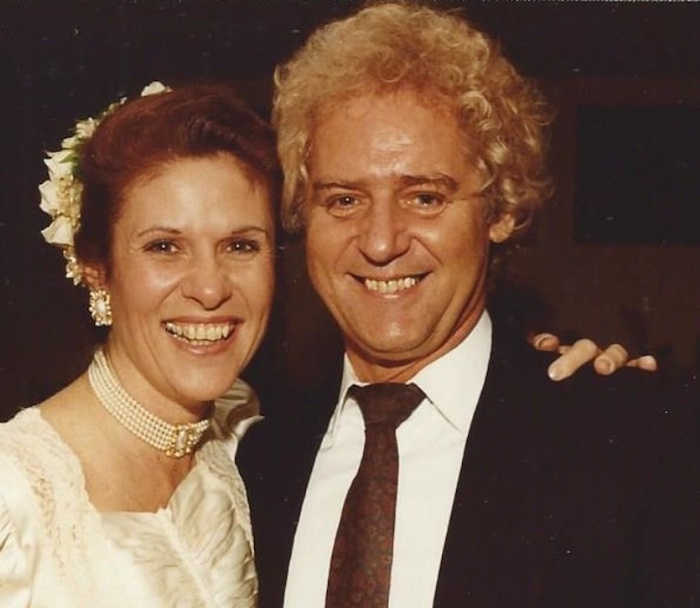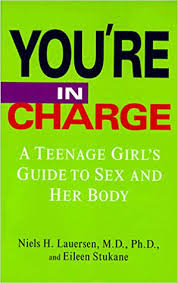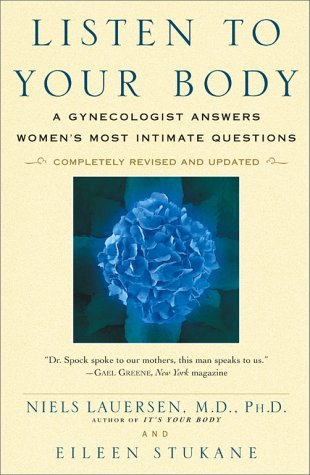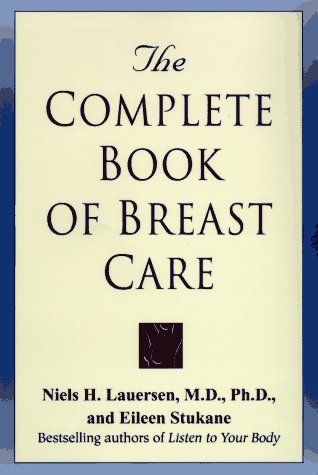Author’s Note: In the summer of 2020, I learned that Niels H. Lauersen M.D., had passed away. Together, he and I had written five well-received books about women’s health over a 20-year stretch, however it was not our books but his Icarian rise too close to the sun that earned him the New York Times obituary headline: Niels Lauersen, Fallen Fertility Doctor To The Stars, Dies at 84. My fingers took on a life of their own at the keyboard as I released my memories of a man who was once revered. Thinking about how one man’s dramatic rise and fall may resonate with others, I shared my resulting essay, Fame and The Final Chapter: My Co-Author, Myself, with my editor at Chelsea Community News. Then this past Saturday, February 20, a contributor researching an article for the Science section of the New York Times, called me to ask, “What was it like to work with him?” I realized that, like a magnet, the complex life of Niels Lauersen continues to draw interest, and from unexpected directions.—Eileen Stukane

BY EILEEN STUKANE | “Fallen Fertility Doctor To The Stars Dies At 84” headlined The New York Times’ obituary of Dr. Niels H. Lauersen, who died on July 14, 2020. I am staring at the headline and recalling the quote: “The facts are always less than what really happened.”
Ah, Niels, the charismatic savior for so many infertile women, the celebrity gynecologist for boldface names such as Celine Dion and Liv Ullman, the benevolent physician whose kindnesses made women weep, but also the keeper of secrets that ought never to be revealed. The famous doctor who went to prison!
Our 20-year working partnership, our five books co-authored, introduced me to the multi-faceted complexities of what makes a man—in this instance, a well-known man. I was drawn to human complexities, found them fascinating, but his took me on a rollercoaster ride I could have never predicted. I was a collaborator, a writer who signs on to shape the words of another, words that join two people in the world of their books. Without realizing what I was in for, I was also connected in other ways, away from the printed page.
I met Niels (“Call me Niels, no need for Dr. Lauersen.”) in 1980, when I interviewed him in his office at Mt. Sinai Hospital in New York City. I was a busy freelancer, writing an article about pregnancy for McCall’s magazine. He was the obstetrician-gynecologist who, with Steven Whitney, had written the bestselling women’s health book It’s Your Body.
As the interview came to an end and I was packing up what in those days was a very bulky tape recorder, he asked, “Would you like to write a book with me?” I said, “No,” that if I was going to go through the trouble of putting together a proposal, writing a sample chapter and shopping it around, I would do that for my own book, not a collaboration. He countered with, “But I already have a contract and the deadline has passed. You don’t have to do any of that.” He didn’t say those words as clearly as they are written here. His Danish accent, configured somewhat by a quirk of speech all his own, resulted in Niels-Speak, which those who knew him understood as others understand a foreign language.
I still declined a collaboration but he persisted, walked me to the elevator, held the door, and continued to make his case. Then came the phone calls about how great this book would be and what a good time we’d have doing it. Finally, I asked my agent her advice and she said, “He’s had a bestseller and this is his next book. It seems like a good idea, sure to make money.” And so I said “Yes” to an unexpected partnership and what became a popular women’s health book, Listen to Your Body: A Gynecologist Answers Women’s Most Intimate Questions.
The book was based on the over 1,000 letters Niels had received from women after that bestseller. They wrote from all over the country asking for advice on gynecological issues that they felt their own doctors were disregarding. He poured out his knowledge. We met late evenings, after patients and surgeries, when the hospital offices were empty, except for his. Ours was a true 50-50 collaboration—with Niels filling my tape recorder with deeply felt information and me turning that information into a book.
It took two years to hold the first copy in our hands, but during that time he had made a commitment: “I’m going to put you through medical school, teach you what I know.” He dressed me in scrubs and took me with him into a childbirth. I’ll always remember when he opened the door to that delivery room and before me was a woman fully dilated and cavernous. A dizzying sight for an unprepared novice! With my scrubs on I also witnessed Niels perform a circumcision, where I saw a tiny newborn positioned in a way I hope never to see again. Our visit to the neonatal ICU caused spontaneous tears to flow as I watched those tiny premature infants attached to tubes and machines struggle to survive. No one else would have taken the chances he did, bringing me into the settings he did, but these experiences made me a better writer.
Niels was the dedicated good doctor who did not want to cut corners. For him, “Listen to your body” was more than a slogan or book title, it was almost a religion. He wanted women to trust their instincts and be unafraid to challenge their doctors and say for instance, that endometriosis was real pain and suffering, as was premenstrual syndrome, which decades ago most doctors believed was nonexistent.
It was not always all work, no play, with Niels. Sometimes I would arrive for a work session and he would say, “Let’s go to this party I’m invited to at Sneden’s Landing, or there’s a dinner in New Jersey, or let’s visit my friend’s house in South Hampton (a mansion on the famous Gin Lane).” Never was I appropriately dressed for even one of these impromptu occasions. There I’d be in an old sweater and jeans at a fancy cocktail party. The spontaneity of it all was glorious, though. Surrender to the unplanned, this I learned from Niels. Before our collaboration, I could have easily bristled at abrupt changes. The hosts of parties loved it whenever Niels appeared, because they were never really sure that he would. He would become the center of attention, especially for the females’ attention. I remember being pushed and wedged into a large potted plant by a woman who just wanted to get closer to him.
However, I do not think these jaunts occurred because Niels thought spontaneous socializing or a change of scenery would be beneficial. He just liked an opportunity to drive his Jaguar, a terrible city car that overheated every few blocks. After a while it seemed things quieted down. “Have you taken any drives in the Jaguar?,” I asked. “It burned up. I left it in the street, walked away. I’m going to buy American,” he announced, and so he did. Niels purchased whatever Cadillac was calling its sports car in the ’80s, but it was too small for him. His blond curls popped out of the sunroof and bounced in the breeze. From a few blocks away, it looked like a clown car was arriving. Some friends assessed the situation, did the groundwork, and soon he was driving a new Audi.

As Listen To Your Body was being published, our editor at Simon and Schuster was enthusiastic about taking one of the chapters, the one on Premenstrual Syndrome, PMS, and giving us a contract for a book on that subject. What I thought was a one-time collaboration was evolving into a partnership that was not fixed in time. It seemed the ride was set to peak again but instead, there was a dip.
Niels clashed with the newly hired president of Mt. Sinai, and shifted his affiliation to Lenox Hill Hospital, where he always had admitting privileges. With his Mt. Sinai office gone, he needed a new homebase. While collaborating on the PMS book, we came in contact with a PMS organization which coincidentally, was giving up its office space above a diner on Third Avenue in Manhattan. Was this a good look for an important physician, an author of bestsellers? I thought image mattered, but it did not. Women came from all over the tri-state area to climb the stairs for their appointments.
It was there, in those offices scented with the aromas of French fries and burgers, that I was able to watch Niels interact with his patients. He was smart, kind, and caring. He adored women and they adored him. (One didn’t have to think much about the source of inspiration for his friend, New York magazine food critic Gael Greene’s novel Doctor Love.) Although he had once been married to the Standard Oil heiress Rebekah Harkness, his clientele was largely not society. In his waiting room were women who owned Manhattan townhouses—but mostly, his patients were a racially mixed group of working women. Every woman he counseled was as important as the woman who came before her.
With his Nordic good looks, Niels was telegenic. In the 1980s, his television appearances on The Phil Donahue Show and numerous other national and local programs promoted our books and attracted women from all walks of life. Being from Denmark, with its national healthcare, Niels had a more egalitarian and socialistic attitude about care than other US doctors. He never refused anyone who sought his help, and when presented with health issues, his instincts were uncanny.
“I’m a good diagnostician, probably a better diagnostician than a surgeon. Don’t get me wrong, I’m a good surgeon, but I’m a very good diagnostician,” he once confided. When a girlfriend visiting from San Francisco was extremely fatigued and told me her doctors hadn’t found anything wrong with her, I took her to Niels. After speaking with her at length, he thought she might have hepatitis C and did a blood test. Sure enough, he was correct.
Another friend was trying to become pregnant and had consulted with a fertility specialist who did a thorough examination, including an ultrasound of her uterus. That doctor’s conclusion was that fibroid tumors were preventing her from conceiving, and she should undergo a myomectomy, surgery to remove fibroids. I suggested a second opinion from Niels and one night close to midnight, the only time Niels had a free moment, she came to his office. He examined her and announced that no, she did not have fibroids and there was no reason she could not conceive. She held up the ultrasound image, which had clearly marked arrows pointing to the so-called fibroids, and said, “But what about this? What about the arrows?” Niels said, “Anyone can draw arrows. You like arrows?” He pulled out his own patients’ X-rays from a drawer, drew arrows on them and said, “See, here are more arrows. You don’t have fibroids. Go home and get pregnant,” and she did. Whenever I spoke to any of Niels’ patients, they matched these stories with ones of their own, over and over. Knowledge and instinct saved the day.

Soon he began to specialize in infertility issues. After the walkup offices over the diner came a duplex office suite on the corner of Park Avenue and East 74th Street, a dramatic change to a tony address with a sidewalk entrance. His calendar of appointments exceeded the number of hours in a day. In the 1980s and most of the 1990s, he was cresting, and we were cresting. We wrote more books. PMS, Premenstrual Syndrome and You in 1983, and when another writer had to bow out of what became It’s Your Pregnancy, I jumped in to help in 1987. That was followed by You’re In Charge, A Teenage Girl’s Guide to Sex and Her Body in 1993, then The Complete Book of Breast Care in 1996. Although we had our separate projects, he wrote with different co-authors now and then, I wrote my own book, The Dream Worlds of Pregnancy, as well as a monthly magazine nutrition column, we usually circled back to each other. Slowly, though, in the late-90s, the rollercoaster ride began to shift. The heady peaks and spills and more peaks, changed to unpredictable twists and turns.
A campaign to update Listen to Your Body, published in 1982, succeeded and we began revising the work for publication in 2000, but our traditionally shared 50-50 input was unbalanced. Niels had at least 30,000 patient files, an upstairs lab dedicated to in vitro fertilization, pregnant women giving birth ‘round the clock it seemed, boldface names with health questions entering through his office side door from the building’s lobby, and added to that an active nightlife enhanced by his relationship with songwriter Denise Rich, whose ‘round midnight musician hours coincided with his.
In the midst of all this activity, without fanfare, framed photos of Niels at the White House, a photo with Bill Clinton, one with Hillary, another with the Clintons together, appeared on the shelves in his office. Denise, whose ex-husband was the wealthy fugitive financier Marc Rich, had become politically connected and Niels was accompanying her to events at the White House. This was a lot to juggle. I felt he was not himself, or at least not the “himself” I once knew. Our updated book was becoming 90 percent my responsibility, with Niels weighing in on barely 10 percent of the information. There was an unease in the air.
I had not paid much attention when the health insurance industry had successfully lobbied to change the law regarding health insurance fraud to a federal crime from a state issue. When adjudicating state law, a judge has some latitude to use his discretion in sentencing. A federal case required a judge to follow specific sentencing guidelines. No nuance permitted! Gossip had it that with its new federal clout, the health insurance industry was looking around for a high-profile case to use as an example for physicians. Don’t even try to defraud us!
The day the FBI raided Niels’ office and took his files, everyone turned ashen, as if a volcano had erupted in their midst. For all I knew I could have been wearing a smoky veil. Everything seemed hazy, the desks, the walls, the people. Although Niels was shaken, he never wavered in his belief that he had done nothing wrong, that his files were in order. Still, he was indicted. At his trial, there weren’t enough seats in the courtroom to accommodate his supporters, the women he cared for, was available for, no matter what hour, no matter what day, whether pregnant or not.
He went on trial for health insurance fraud: Claims for hundreds of laparoscopies were submitted in a short timeframe, too many for the health insurance industry, which did not cover in vitro fertilization, to accept as true. A court date was set. His trial, which turned out to be only the first trial, occurred in 2000 when the updated Listen To Your Body was set to be published. The publicity tour and the scheduled high print number, were cancelled. The book would quietly disappear, and soon the others would too. For me, each vanishing of one of our carefully researched, carefully crafted books for women was like the passing of a loved one, and I mourned.

The hung jury could not reach a verdict. The case against Niels could have been closed, and federal cases that reach this conclusion often are, to spare taxpayers the cost of yet another trial. The determined federal prosecutors instead kept a steady pace and pressed for a second trial. Sitting in the courtroom, I could tell that in the first trial the prosecutors knew little about how women’s bodies worked. Niels was initially defended by Ted Wells, a well-known lawyer of mostly high-profile political cases. Wells had educated himself about the medical aspects of gynecology. He knew how to rebut and speak to the jury. Niels fired him. “He didn’t get me an acquittal,” he said. I gasped upon hearing this quick dismissal of his well-qualified advocate.
The rollercoaster was diving. How far? Would it ever climb again? Other accusations and lawsuits were swirling and he was at the vortex of them all. Niels was found responsible for a tragic childbirth that resulted in a baby suffering brain damage. His medical license was revoked by the New York State Department of Health. Every particle of his personal universe was cracking, breaking, dissolving in front of him. The pain only escaped in glimmers here and there. Mostly he remained positive, deflecting consolation. That he could have lost his license, that he could perhaps go to jail, these were unfathomable possibilities that were unfathomable no more. I have felt the rolling wave that a solid floor becomes during an earthquake. Every day was like that rolling wave underfoot.
In his second trial in 2001, the new law firm he hired sent an associate to defend him. She was up against the same federal prosecutors, but now it was a year later and this time around they were not going to make the same mistakes. They had studied and learned about women’s health and they got the conviction they wanted. According to federal guidelines, based on the number of counts against him, Niels was sentenced to seven years in prison. Upon sentencing him, the judge remarked, “Your fall is Faustian.” In a surreal way, it felt like my fall too.
Niels refused the escape route offered to him by the Danish government, which had made a deal with the Feds that required him to return to Denmark, serve a few months in prison and then be free to practice medicine in Europe. The catch was that he could never again return to the United States. He declined because America, New York City, was his home and he was going to win on appeal, and he was going to get his license reinstated.
In the manner of Peter Pan, he remained the same upbeat doctor who believed in his powers of persuasion all those years ago when we met in his Mt. Sinai office. The irony of his conviction was that in 2002, a year after he started serving his sentence in Allenwood federal prison in Pennsylvania, health insurance companies in the state of New York were mandated by law to cover infertility treatments for women ages 21 to 44—and this was only the beginning of more required coverage to come. Meanwhile, the doctor who was convicted of defrauding health insurance companies, using procedures as cover-ups for fertility treatments at a time when an entire industry was creating barriers that in effect, stopped women from becoming the mothers they wanted to be, was in jail.
After his trial, Niels held out the hope that Bill Clinton would pardon him, after all they spent quite a few occasions together at the White House. Bill Clinton pardoned Marc Rich. Niels served his sentence. In prison, the inmates called him “Doc” and he readily offered them gynecological advice for their wives, daughters, sisters.
Our ride slid down into a lonely terminus—but by the time it did, I had learned more about health, and gained more insight into human behavior than I ever would have, had I committed to that “No” all those years ago. Although I saw Niels a few times after he was released from prison a little less than six years later, and felt his cheerful enthusiasm again, we were on different life paths.
What I choose to remember and take for myself from my time with Niels is his fearless sense of confidence and optimism, and his generosity, of his time, of his talent. For the errors of his ways he paid mightily, but until the end, wherever he was, he found ways to work to improve the health of women. That was his mission, that was his life, the glorious heights, the dramatic descents, the comedy, the tragedy, the man.

Chelsea Community News is made possible with the help of our awesome advertisers, and the support of our readers. If you like what you see, please consider taking part in our GoFundMe campaign (click here). To make a direct donation, give feedback, or send a Letter to the Editor, email scott@chelseacommunitynews.com.

Pingback: game sex
Pingback: agen bola online
Pingback: How to not kill yourself when bitcoin crashes
Pingback: grote blote tieten
Pingback: รับออกแบบโลโก้
Pingback: สูตรเจาะเลขเด็ด หวยฮานอย
Pingback: Phetchbuncha stadium
Pingback: cv letter template
Pingback: Dragongaming มีจุดเด่นอะไรบ้าง
Pingback: วิธีดูเลขรางวัล หวยหุ้นอินเดีย
Pingback: locksmith Elk Grove
Pingback: Buy DMT Vape pen for Sale New South Wales
Pingback: psychedelic mushroom chocolate bars for sale
Pingback: 7 up bar
Pingback: check
Pingback: Psychedelic mushroom chocolate bars
Pingback: Thomas Adewumi University
Pingback: y2mate
Pingback: horny wives
Pingback: sbo
Pingback: sbobet
Pingback: สินเชื่อโฉนดที่ดิน
Pingback: เงินด่วน
Pingback: golden teacher mushrooms,
Pingback: สล็อตวอเลท ไม่มีขั้นต่ำ
Pingback: prodentim supplement reviews
Pingback: sbo
Pingback: SIG MCX RATTLER SBR
Pingback: Digital transformation consulting
Pingback: De quelle manière jouir de l’emprunt à taux mixte ? - Global créditComment profiter du prêt à taux mixte ? - Global Crédit
Pingback: Devops Services Companies
Pingback: ตรวจหวย
Pingback: คาสิโนออนไลน์เว็บตรง
Pingback: mega888
Pingback: part time social media jobs
Pingback: track using imei number
Pingback: Can you order DMT Online?
Pingback: beretta m9 for sale